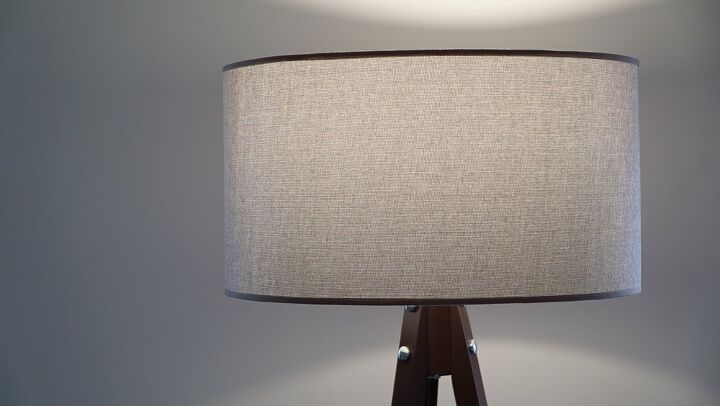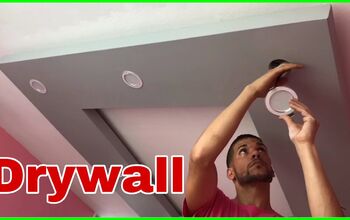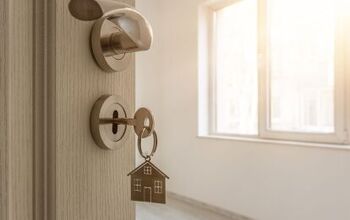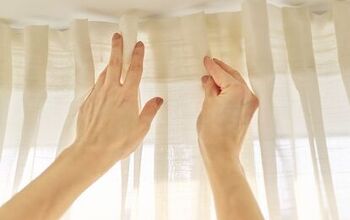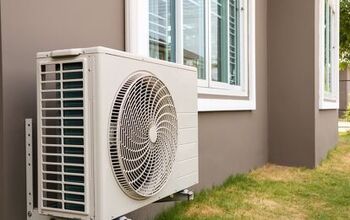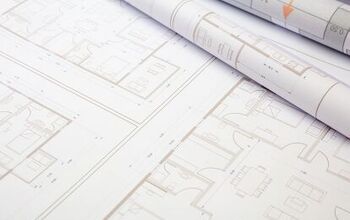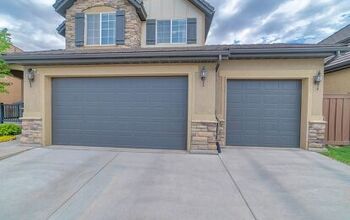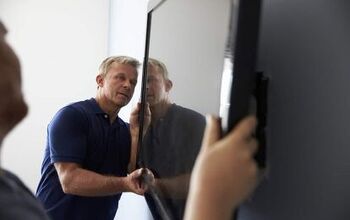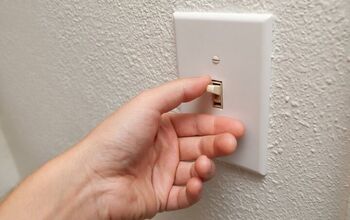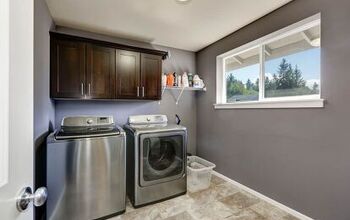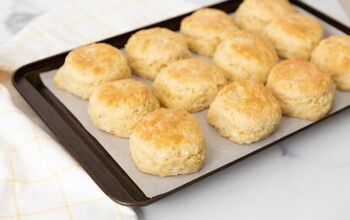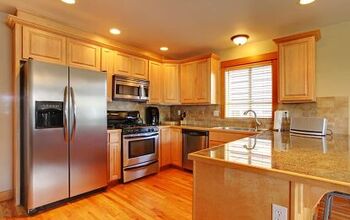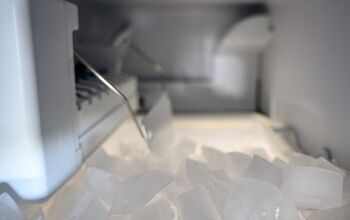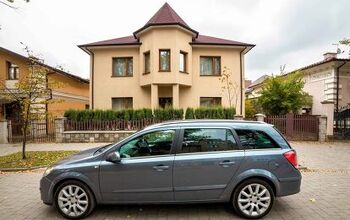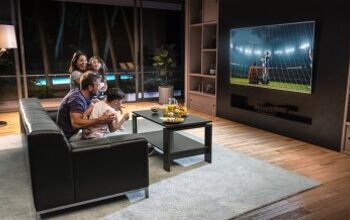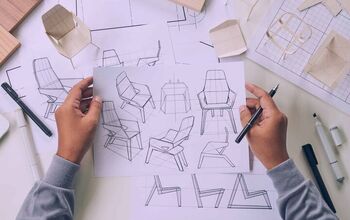7 Types Of Lampshade Fitters (With Photos)

When it comes to pairing a lampshade with a lamp base, it’s important to also consider the lamp shade fitter. The fitter is responsible for attaching the shade to the base and usually cannot be changed, so be sure to match this shade attachment with a lamp base that is compatible.
The three main types of lamp shade fitters are UNO, spider, and clip-on. However, there are variations of also each of these options. Continue reading to understand the different types of lamp shade fitters and help determine which fitter type you need for your specific purposes.
What is a Lampshade Fitter?
A lampshade fitter is the wire portion of the shade that connects it to the body of the lamp. Fitters are not interchangeable, so it’s important that you choose a shade that has the proper fitter for your lamp. The most common types of lamp shade fitters are as follows:
UNO
UNO fitters are commonly seen on smaller table lamps. Unlike spider fitters, these fitters do not require a harp since the wire fitting is permanently affixed to the lampshade. Uno fitters feature 1-inch rings with inner threads that screw onto the end of an “UNO” socket of the table or floor lamp.
The shade is attached directly to the lamp socket, underneath the light bulb. Uno sockets differ from standard sockets in that they have threads at the end, which are designed to hold the UNO fitter in place. These fitters are often found in older lamps. There are two main variations of UNO fitters: slip UNO fitters and threaded UNO fitters.
Slip UNO FitterSlip UNO fitters are most common variation. They involve the fitter resting atop the bulb socket and the bulb slipping through the center ring. As such, these fitters are held in place by the bulb.
Threaded UNO FitterThis alternate version features a center ring near the top of the shade where the light bulb is threaded through from the bottom. These fitters are commonly seen in down-bridge lamps and when installed, the bulb faces downwards.
Spider/ Harp
Also sometimes referred to as a washer fitter, spider lamp shade fitters are the most common type of fitter used for both floor and table lamps. These fitters are installed atop the lamp’s “harp,” which refers to the U-shaped metal component on a lamp that fits around and shields the light bulb.
This fitter has three prongs (spiders) that meet at the center, where a washer is present. The washer on these fitters are designed to fit on top of the harp, which features two wires that fit around the lamp socket and form a “harp saddle.”
The harp saddle is attached right below the light socket. Once the harp is in position, the fitter is secured to the lamp via a finial. Lampshades that are up to 14 inches high usually feature a ½ inch fitter drop. This means that the fitter rests ½ inch below the top of the lampshade. Lampshades that are taller than 14 inches typically have a much larger drop, which will be indicated in the product details.
It’s important to note that lamps do not always come with harps. If your lamp did not come with a harp but you want to use a lampshade with a spider fitter, you must buy a harp separately. Harps come in a variety of sizes, which will impact the vertical position of the shade.
Reflector Bowl Spider FitterIf your particular lamp has a reflector bowl inside of the shade, a reflector spider fitter may be required to secure it in place. These fitters differ in that they are outfitted with grooves in the spider arms to secure the reflector bowl in place. Reflector bowls do not come with the lamp shade. Instead, they are typically included along with the lamp base.
Clip-On
As the name suggests, clip-on lamp shade fitters snap directly to the light bulb like a clamp with no additional hardware required. As clip-on fitters directly touch the light bulb, it is highly advised that these shades are only used with low-wattage bulbs. If you still want a brighter light, opt for a low-wattage LED bulb.
Clip-on fitters come in two forms, based on the type of bulb:
- Candelabra bulbs. The candelabra bulb clip, also referred to as a Flame Clip, is commonly used on chandeliers and wall sconces. The clip is built into the fitter and is designed to fit over a standard medium or candelabra bulb. The maximum bulb wattage is 25 watts.
- Standard (Edison) bulbs. Standard clip-on fitters are designed to snap onto standard incandescent (Edison) bulbs. They are primarily seen used on smaller tables and accent lamps – generally shades that are between 8 and 10 inches. Maximum bulb wattage is between 40 and 60 watts, which will be noted in the product details.
Clip-on lampshades come in either a full round or half-round shape. Those with a half-round shape is typically used on wall bracket lamps and is known as a “shield.”
Note: Any lampshade with a spider fitter can be altered to be used with a clip-on lamp shade fitter.
Euro
Similar to the UNO fitter, the Euro is a European style lamp shade fitter. Like UNO fitters, these are often used on smaller table lamps. They do not require a harp, as the wiring fitting is permanently connected to the lampshade. Then, the lampshade attaches directly to the lamp socket, beneath the light bulb.
Chimney Fitters
Chimney fitters, or Chimney rings are a form of specialty fitter that are designed for lamps that hold a hurricane – a glass shade that is used on many oil lamps, both standard and “electrified.” The ring in the center of the three prongs (spiders) is much larger and is meant to sit over or around tall glass chimneys.
Choosing the Right Drop Size
Lampshades with UNO or spider fitters typically have a slight distance between the top edge of the shade and the center of the fitter. This drop makes the fitter less visible when viewing the lamp from an angle, without raising the position of the shade by the drop distance.
Shades with spider fitters will usually feature a ½ to 1-inch drop, while shades with Slip UNO fitters will have several inches of drop that varies from shade to shade as the fitter must drop below the light bulb. Threaded UNO fitters, on the other hand, typically have a drop between one and two inches to visually conceal the electrical attachments above the shade.
Regular shades will most likely have shallower drops than tall cylindrical lamp shades. Taller lampshades must have a deeper drop to account for the extended proportions and reach the lamp’s harp.
Accounting for Bulb Heat
Regardless of the type or wattage, light bulbs produce heat. If your new lampshade is positioned too close to the bulb, this can result in discoloring of the shade or perhaps worse – a fire hazard. Here’s how to avoid these issues and make sure that you choose the right shade for your light bulb:
- For 40- to 60-Watt incandescent bulbs, allow for at least one to two inches between the shade and the light bulb.
- For 75 to 100-Watt incandescent bulbs, allow for at least two to three inches of space between the lampshade and the light bulb.
- For 150-Watt incandescent bulbs or higher, allow for at least three to four inches of space between the light bulb and the lampshade.
- For compact fluorescent bulbs (CFLs), these bulbs tend to run cooler and require less space. Though, to be safe, allow for at least one to two inches around the bulb on all sides.
- For LED bulbs, these bulbs run even cooler and require even less space. Though, to ere on the side of caution, allow for at least one to two inches on all sides of the bulb.
Never exceed the maximum wattage, as this will not only cause the shade to catch fire but it can also result in an electrical fire. If you’re unsure what replacement shade you should choose, try to opt for one that is as close in size and shape to your original shade as possible.
It’s also important that the top of the lampshade is always left open to properly vent heat. Never place a cloth or other material over the top of the shade, especially when using hotter bulbs. This can cause the lampshade to overheat, and may result in either the cover or the shade itself catching fire. Also, make sure to remove the plastic from your new shade after installation, as plastic can overheat as well.
Related Questions
How do I pick the right size lampshade?
As a general rule of thumb, the lampshade should be roughly two-thirds the height (give or take an inch), and twice as wide as the base.
What is a lamp finial?
Lamp finials sit atop a lamp harp and hold a spider fitter to the lamp base. Swapping out the finial is a great way to switch up the look of your lamp and give it more flair.

Jessica considers herself a home improvement and design enthusiast. She grew up surrounded by constant home improvement projects and owes most of what she knows to helping her dad renovate her childhood home. Being a Los Angeles resident, Jessica spends a lot of her time looking for her next DIY project and sharing her love for home design.
More by Jessica Stone



